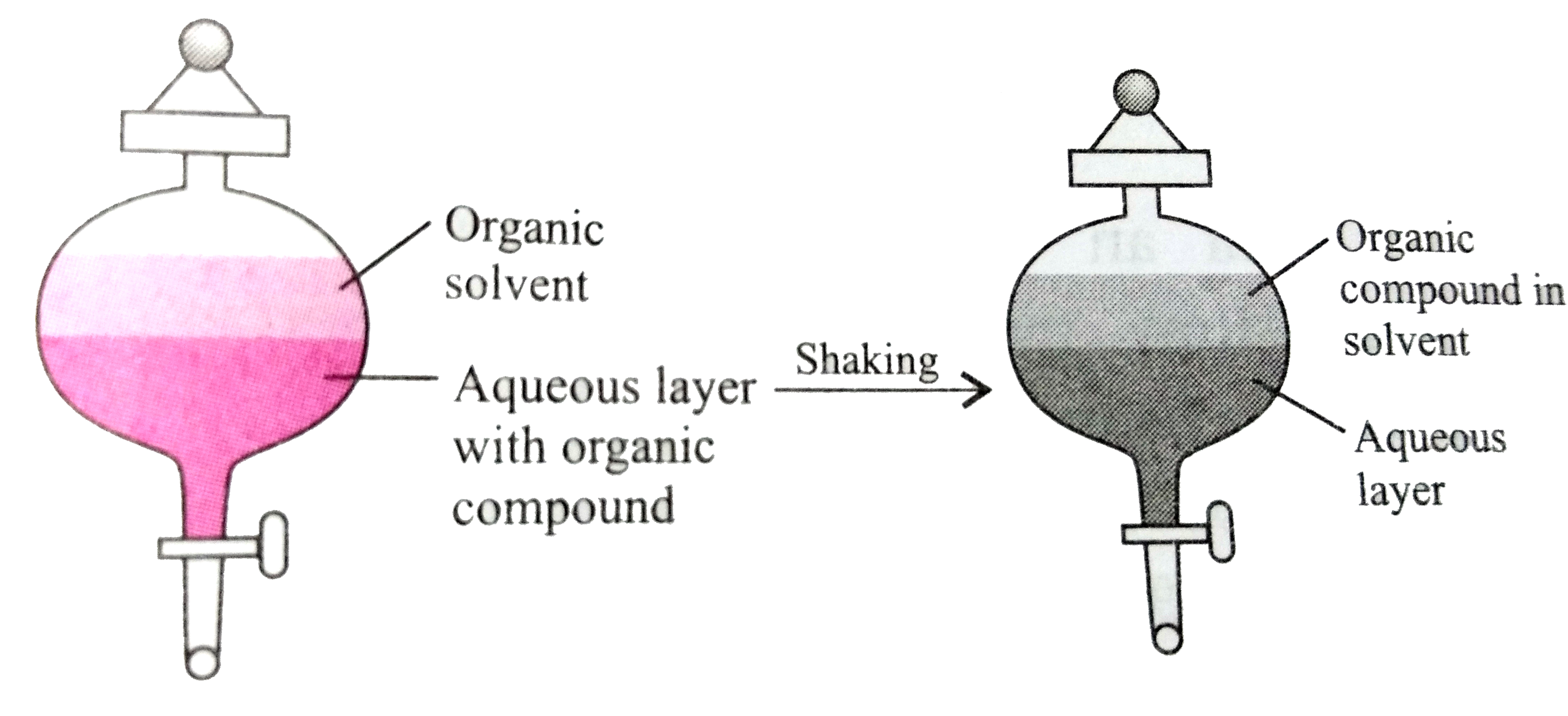Methylene blue, from its aqueous solution is adsorbed on activated charcoal at 25∘C.For this process, the correct statement is
The adsorption requires activation at 25∘C
The adsorption is accompanied by a decrease in enthalpy.
The adsorption increases with increase of temperature.
The adsorption is irreversible.
The correct Answer is:B
To solve the question regarding the adsorption of methylene blue on activated charcoal at 25°C, we need to analyze the statements provided in the context of physical adsorption.
1. Understanding Adsorption:
- Adsorption is a surface phenomenon where molecules adhere to the surface of a solid or liquid. In this case, methylene blue is being adsorbed onto activated charcoal.
2. Type of Adsorption:
- The process described is physical adsorption (physisorption), which involves weak van der Waals forces. This is different from chemical adsorption (chemisorption), which involves stronger chemical bonds.
3. Enthalpy Change:
- Physical adsorption is typically an exothermic process, meaning it releases heat. Therefore, during the adsorption of methylene blue on activated charcoal, there will be a decrease in enthalpy (ΔH < 0).
4. Activation Energy:
- Physical adsorption does not require activation energy. It occurs spontaneously as the molecules of methylene blue come into contact with the surface of activated charcoal.
5. Temperature Dependence:
- Since the process is exothermic, according to Le Chatelier's principle, the adsorption process is favored at lower temperatures. Thus, as the temperature increases, the extent of adsorption decreases.
6. Reversibility:
- Physical adsorption is generally reversible. This means that the adsorbed molecules can be desorbed from the surface of the adsorbent under certain conditions.
Conclusion:
Based on the analysis above, the correct statement regarding the adsorption of methylene blue on activated charcoal at 25°C is that the adsorption is accompanied by a decrease in enthalpy (exothermic process).
Correct Answer:
- The adsorption is accompanied by a decrease in enthalpy.
- Adsorption is a surface phenomenon where molecules adhere to the surface of a solid or liquid. In this case, methylene blue is being adsorbed onto activated charcoal.
- The process described is physical adsorption (physisorption), which involves weak van der Waals forces. This is different from chemical adsorption (chemisorption), which involves stronger chemical bonds.
- Physical adsorption is typically an exothermic process, meaning it releases heat. Therefore, during the adsorption of methylene blue on activated charcoal, there will be a decrease in enthalpy (ΔH < 0).
- Physical adsorption does not require activation energy. It occurs spontaneously as the molecules of methylene blue come into contact with the surface of activated charcoal.
- Since the process is exothermic, according to Le Chatelier's principle, the adsorption process is favored at lower temperatures. Thus, as the temperature increases, the extent of adsorption decreases.
- Physical adsorption is generally reversible. This means that the adsorbed molecules can be desorbed from the surface of the adsorbent under certain conditions.
Based on the analysis above, the correct statement regarding the adsorption of methylene blue on activated charcoal at 25°C is that the adsorption is accompanied by a decrease in enthalpy (exothermic process).
- The adsorption is accompanied by a decrease in enthalpy.
Similar Questions
Methylene blue, from its aqueous solution, is adsorbed on activated charcoal at 25∘C . Identify correct one
(a)The adsorption requires activation at 25∘C
(b)The adsorption is accompanied by a decrease in enthalpy
(c)The adsorption increases with increases of temperature
(d)The adsorption is irreversible
View SolutionH2 can displace the metal from its aqueous solution.
View Solutionp-Amino-N,N-dimethylaniline is added to a strongly acidic solution of X. The resulting solution is treated with a few drops of aqueous solution of Y to yield blue colouration due to the formation of methylene blue. Treatment of aqueous solution of Y with reagent potassium hexacyanoferrate (II) leads to the formation of an intense blue precipitate. The precipitate dissolves on excess addition of the reagent. Similarly, the treatment of the solution of Y with the solution of potassium hexacyanoferrate (III) leads to a brown colouration due to the formation of Z.
Q. Compound X is
View Solutionp-Amino-N,N-dimethylaniline is added to a strongly acidic solution of X. The resulting solution is treated with a few drops of aqueous solution of Y to yield blue colouration due to the formation of methylene blue. Treatment of aqueous solution of Y with reagent potassium hexacyanoferrate (II) leads to the formation of an intense blue precipitate. The precipitate dissolves on excess addition of the reagent. Similarly, the treatment of the solution of Y with the solution of potassium hexacyanoferrate (III) leads to a brown colouration due to the formation of Z.
Q. Compound Y is
View Solutionp-Amino-N,N-dimethylaniline is added to a strongly acidic solution of X. The resulting solution is treated with a few drops of aqueous solution of Y to yield blue colouration due to the formation of methylene blue. Treatment of aqueous solution of Y with reagent potassium hexacyanoferrate (II) leads to the formation of an intense blue precipitate. The precipitate dissolves on excess addition of the reagent. Similarly, the treatment of the solution of Y with the solution of potassium hexacyanoferrate (III) leads to a brown colouration due to the formation of Z.
Q. Compound Z is
View SolutionBenzene and naphthalene from an ideal solution at room temperature. For this process, the true statement(s) is(are)
View SolutionH2A is a weak diprotic acid. If the pH of 0.1 M H2A solution is 3 and concentration of A2− is 10−12 at 25∘C.
Select correct statement (s)
View SolutionOn mixing aqueous solution of copper sulphate with aqueous solution of ammonia a deep blue coloured solution is obtained. Choose the correct options :
View SolutionThe process of separation of an organic compound from its aqueous solution by shaking with a suitable solvent in termed solvent extraction or differential extraction.

The organic compound present in the aqueous layer moves to the organic solvent because
View SolutionOne liter aqueous solutions contains 2×10−2 kg glucose at 25∘C . Calculate the osmotic pressure of the solution.
View Solution
